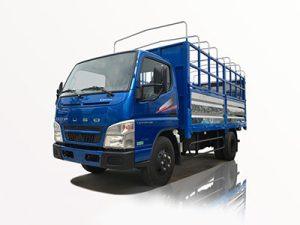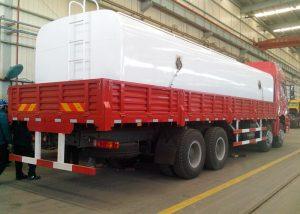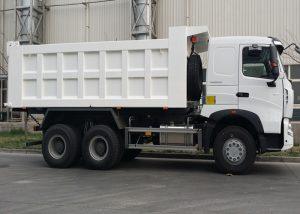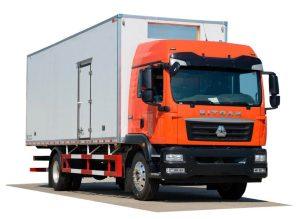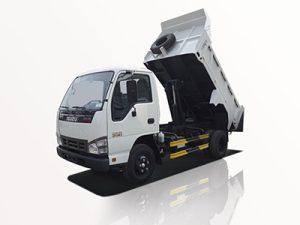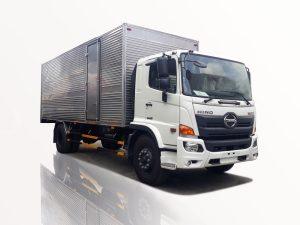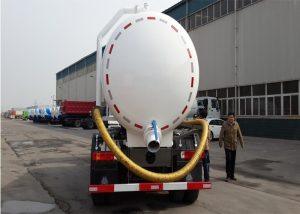Monday to Saturday - 8:00 -17:30
Understanding Trash Truck Dimensions: A Comprehensive Guide
Introduction
In our daily lives, garbage collection is a service we often take for granted, yet it plays a crucial role in maintaining cleanliness and hygiene in our communities. One of the critical aspects of this service is the dimensions of the trash trucks used. Knowing the trash truck dimensions is important for various stakeholders, including city planners, waste management companies, and even general citizens who might need to understand how these trucks fit into their communities. This article aims to provide a thorough exploration of trash truck dimensions, their factors, types, and other relevant information to offer a full understanding of this topic.
1. What Are Trash Trucks?
Trash trucks, often referred to as garbage trucks, are specially designed vehicles used for collecting waste and carrying it to waste disposal locations such as landfills or recycling centers. These vehicles are equipped with various mechanisms to efficiently load, transport, and unload waste materials.
1.1 Types of Trash Trucks
Understanding the different types of trash trucks is vital as their dimensions can vary significantly based on their design and purpose. Here are the common types:
- Front-Load Trucks: These trucks are commonly used in commercial establishments and have a container at the front where waste is loaded.
- Rear-Load Trucks: These trucks are designed for residential waste collection, where garbage is loaded from the back.
- Side-Load Trucks: Equipped with automated arms, these trucks can pick up bins from the side without requiring workers to get out of the truck.
- Roll-Off Trucks: Used for larger volumes of waste, these trucks can transport open-top containers for construction or demolition debris.
2. Importance of Trash Truck Dimensions
The dimensions of trash trucks significantly impact their performance and functionality in various environments. Here’s why they matter:
- Capacity: The size directly correlates to how much waste can be collected in one go, impacting the efficiency of waste management operations.
- Navigation: Smaller trucks can navigate through tight streets and neighborhoods more easily than larger ones.
- Compliance: Cities have specific regulations regarding vehicle sizes for waste collection, making it crucial to select appropriate dimensions.
- Cost-Effectiveness: Proper dimensions can minimize operational costs by maximizing payloads and reducing trips.
3. Standard Trash Truck Dimensions
Trash truck dimensions can vary by manufacturer and design, but there are common specifications that many trucks adhere to. Below is a table displaying standard dimensions:
| Type of Truck | Length (Feet) | Width (Feet) | Height (Feet) | Capacity (Cubic Yards) |
|---|---|---|---|---|
| Front-Load Truck | 20-30 | 8 | 10-12 | 3-6 |
| Rear-Load Truck | 20-30 | 8 | 10-12 | 10-30 |
| Side-Load Truck | 20-25 | 8 | 10-12 | 6-10 |
| Roll-Off Truck | 20-30 | 8-10 | 10-12 | 10-40 |
4. Factors Influencing Trash Truck Dimensions
Several factors influence the dimensions of trash trucks, making it essential to understand them for optimal operation:
4.1 Purpose of Use
The primary function of the truck—whether for residential, commercial, or industrial purposes—affects its size. For example, residential trucks tend to be smaller than those used in commercial settings.
4.2 Local Regulations
Cities and municipalities often have specific laws regarding vehicle sizes, which can dictate the dimensions of trash trucks allowed on the roads.
4.3 Maneuverability
In urban areas with tight streets, smaller trucks may be necessary for easier navigation and access to bins.
5. Advantages of Knowing Trash Truck Dimensions
Understanding trash truck dimensions can provide numerous benefits:
5.1 Enhanced Efficiency
When waste management companies know the appropriate dimensions for their trucks, they can plan routes and schedules more effectively to save time and costs.
5.2 Improved Community Planning
Civic planners can utilize this knowledge to develop better waste collection systems that are suited to the community’s specific needs.
5.3 Increased Safety
Correct dimensions help reduce the risk of accidents during garbage collection, ensuring safety for both workers and community members.
6. Common Challenges with Trash Truck Dimensions
While understanding and optimizing trash truck dimensions is beneficial, there are challenges that often arise:
6.1 Space Limitations
Urban areas may have limited space for parking and maneuvering trucks, which can be a hurdle for larger models.
6.2 Compliance with Regulations
Keeping up to date with changing local regulations regarding vehicle dimensions can be challenging for waste management companies.
7. Tips for Choosing the Right Trash Truck
When selecting a trash truck based on dimensions, consider the following tips:
7.1 Assess the Waste Volume
Understand your typical waste generation volume and select a truck that can handle it efficiently.
7.2 Evaluate Local Routes
Examine the routes where the truck will be operating, considering factors like road sizes and occasional construction zones.
7.3 Check Regulatory Compliance
Ensure the chosen truck dimensions comply with local laws and regulations to avoid fines or operational issues.
7.4 Prioritize Safety Features
Select trucks that have advanced safety features, regardless of their dimensions, to ensure worker and community safety.
8. Innovative Technologies in Trash Trucks
The industry has seen the integration of various technologies aimed at improving efficiency and safety in garbage collection:
8.1 Automated Collection Systems
Modern trash trucks often come equipped with automated arms that can lift and empty bins, reducing the need for manual labor and increasing safety.
8.2 GPS and Tracking Systems
Many trash trucks now use GPS technology to optimize routes, improving fuel efficiency and reducing operational costs.
9. Environmental Considerations
Understanding trash truck dimensions can also play a role in environmental sustainability:
9.1 Reducing Carbon Footprint
By selecting the right sizes and optimizing routes, waste management companies can minimize fuel consumption and reduce emissions.
9.2 Encouraging Recycling
Properly sized trucks help to streamline collection for recycling programs, promoting more effective waste separation and reducing landfill use.
10. Case Studies
Here are a few practical examples illustrating the impact of trash truck dimensions in real-world scenarios:
10.1 Urban Area Implementation
In a densely populated city, waste management switched from larger rear-load trucks to smaller side-load trucks, allowing better navigation through narrow streets. This change led to a 30% increase in efficiency and reduced operational costs by 20%.
10.2 Rural Community Adaptation
A rural community with wide streets opted for front-load trucks to handle larger volumes of waste generated by its residents. This decision helped them efficiently manage waste without increasing collection frequency.
FAQs
1. How are trash truck dimensions measured?
Dimensions are typically measured in feet or meters and include length, width, height, and capacity. These measurements are crucial for determining the vehicle’s ability to navigate various environments.
2. Do trash truck dimensions affect waste collection efficiency?
Yes, appropriate dimensions can enhance efficiency by optimizing waste collection routes, reducing trips, and ensuring the vehicle can maneuver easily within the area.
3. Are there environmentally friendly trash trucks available?
Yes, many manufacturers are now producing electric and hybrid trash trucks that are designed to minimize environmental impact while maintaining effective waste collection capabilities.
4. How often are trash trucks replaced due to wear and tear?
Typically, trash trucks may be replaced or refurbished every 8 to 10 years, depending on usage, maintenance, and technological advancements.
5. Can dimensions help reduce accidents during garbage collection?
Absolutely. Correctly sized trucks that can navigate safely in their designated environments minimize the potential for accidents involving the trucks and pedestrians.
6. What factors should municipalities consider for their trash truck fleet?
Municipalities should evaluate local regulations, community waste generation patterns, road infrastructure, and safety requirements when considering their trash truck fleet dimensions.


